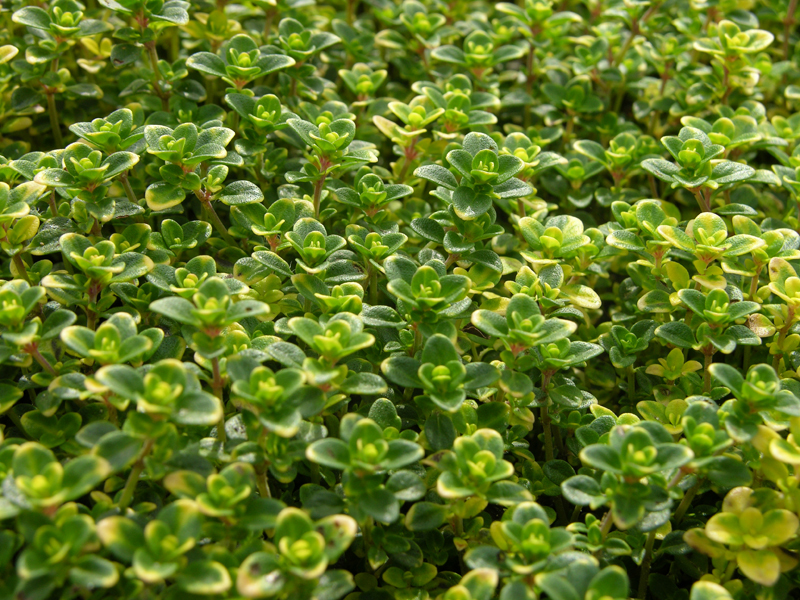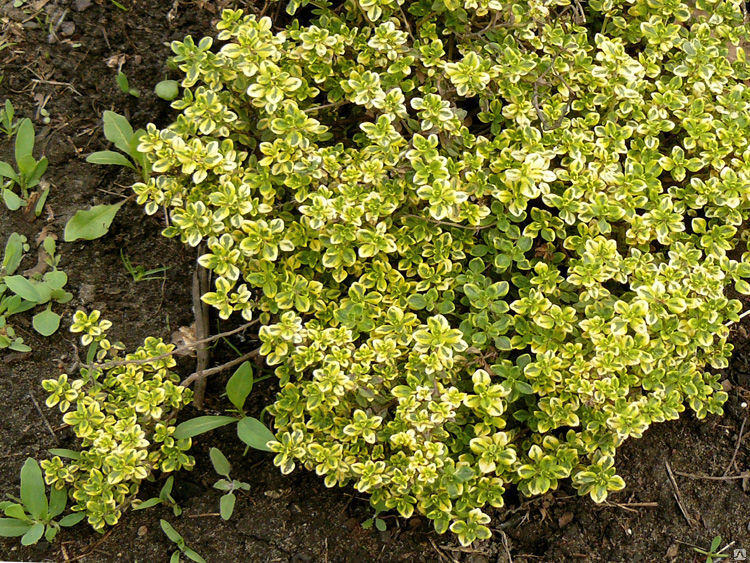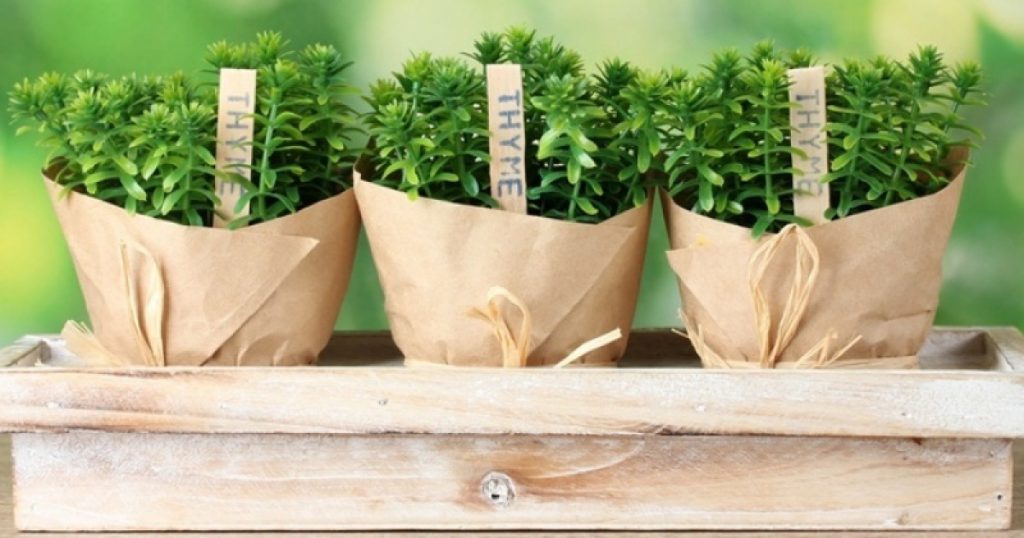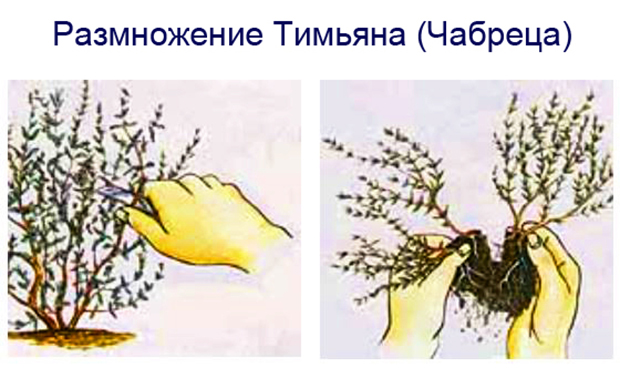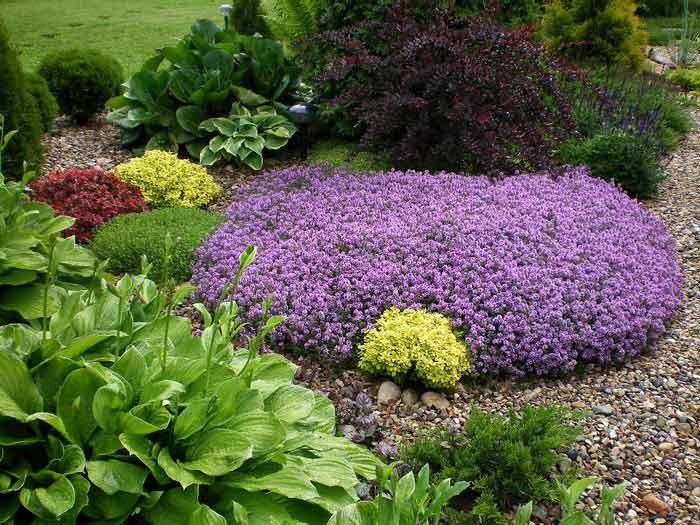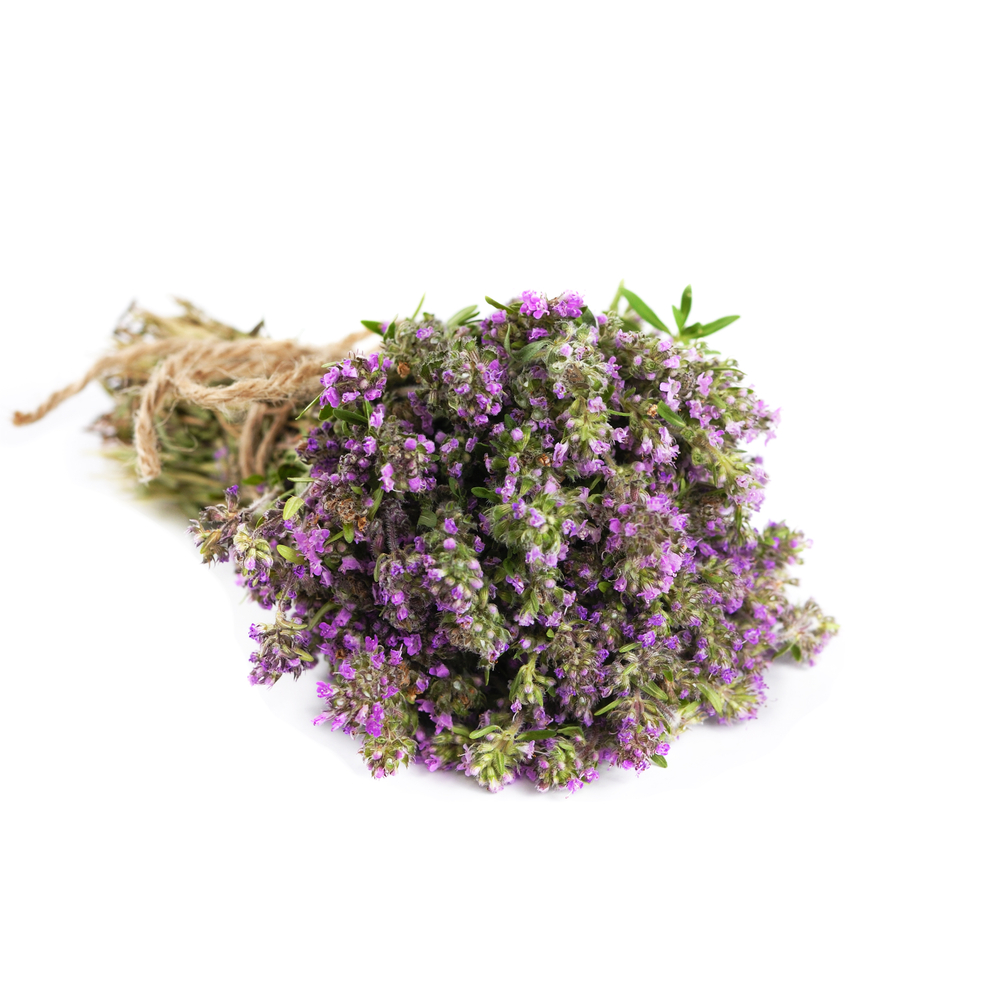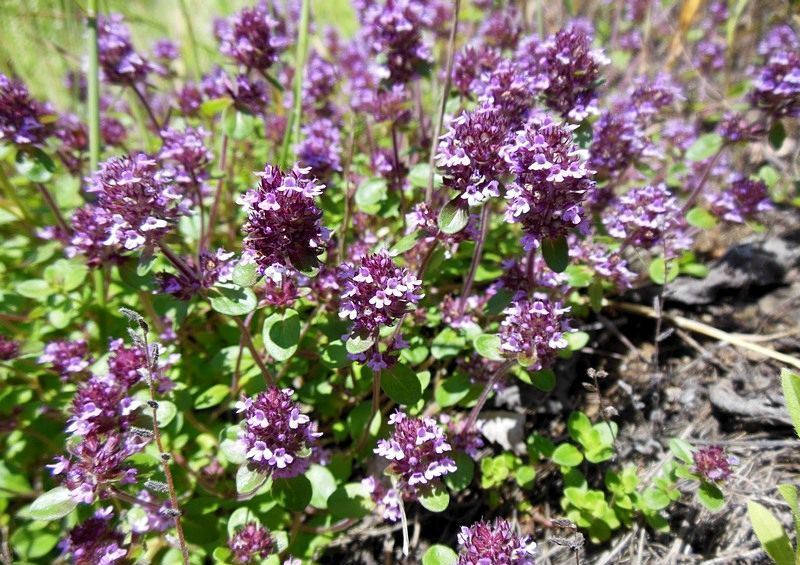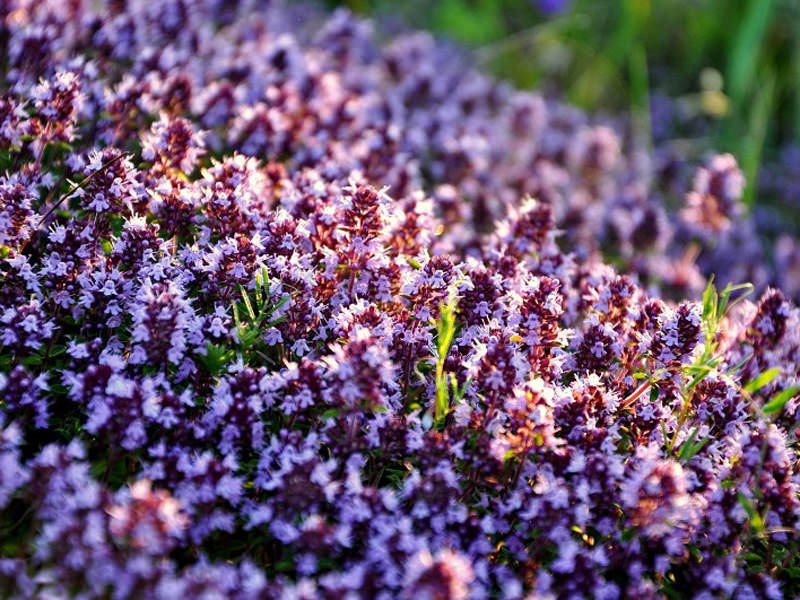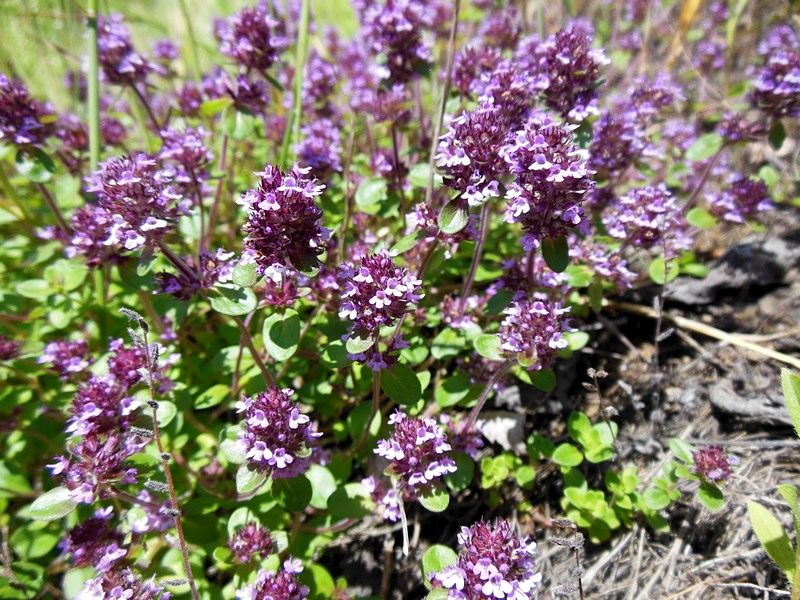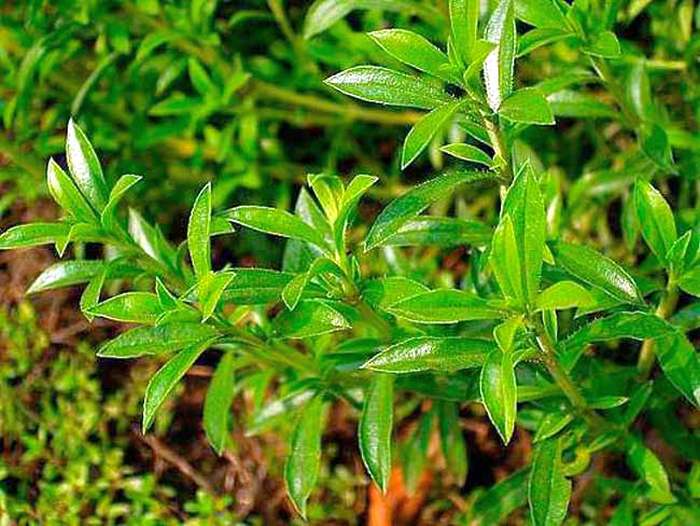Content:
There are plants that give the area where they grow, a special comfort and home conditions. They smell great and are pleasing to the eye. They can often also be used for medical and culinary purposes. Thyme is just such a plant.
Culture information
A unique genus of thyme is a semi-shrub belonging to the family of the lamb family. It covers more than four hundred species distributed throughout Russia.
The homeland of this unique plant is the southern territories of the European continent. Today, wild forms of thyme are found in the northwestern Mediterranean. Another name for the thyme genus is thyme. It was also used by ancient Roman and ancient Greek soldiers to raise the military spirit and vitality. In ancient Russia, they tried to protect themselves from evil spirits with thyme and decorated the icons of the Mother of God (therefore, another name for thyme is "theotokos' grass").
Now thyme is used mainly for decorating exteriors, for example, such a variety as low-growing bryophyte thyme. However, most often lemon thyme (lemon-smelling) is used for these purposes, so named for its characteristic citrus smell.
Is a natural hybrid of the species pulegioides and vulgaris, there is a description of the end Xvi century, consists of many varieties, such as:
- Bertram Anderson is a shrub with golden foliage;
- Spicy Orange - has flowers of a light purple hue and long leaves;
- Gold Edge - has a pleasant smell and is used in cooking;
- Golden King - leaves have a yellow border;
- Silver Queen - blooms in lilac-pink color, leaves are small, silvery-white (which gave the name to the variety).
Characteristics and features of the variety
Thyme citriodorus is a fast-growing shrub of very modest size - about 0.1-0.15 meters, which during flowering rises due to stretching peduncles up to 0.3 m.The form is hummocky, the width can reach 0.8 meters, the shoots rise vertically, the stem is upright. The branches of thyme are herbaceous type, have four edges in cross-section, and are pubescent on the ribs with grayish villi.
The foliage is dark green in color with a white edging (they are slightly yellow in young thyme or lemon thyme bushes), ovoid or oval in shape. The leaves are very small in length - they do not exceed one centimeter. The petioles are short, and the edges of the leaf blades are bent down. If you rub such a leaf between your fingers, you will immediately feel a distinct lemon aroma, with caraway-aniseed notes.
The plant blooms with small flowers of a pale pink scale, which are arranged in inflorescences in the form of brushes at the ends of the stems. The flowering period is all three summer months, pollination takes place with the help of bees, from these flowers you get a wonderful fragrant honey. After flowering, boxes with four nuts are formed - these are the fruits of lemon thyme. The roots of the plant resemble rods, they are branched, but they penetrate shallowly into the soil.
Lemon thyme is used medicinally as an herb and as a source of essential oil.Thanks to such a rich composition, this useful small bush has a wound healing, antimicrobial effect, and also helps to treat respiratory diseases, troubles with digestion and metabolism, and has a calming effect. Also, this plant with a noticeable lemon scent is used in the culinary recipes of most Mediterranean cuisines as a spice (part of "Provencal herbs"), as well as in the production of alcoholic beverages, so it is quite edible.
However, most often lemon thyme finds its application as an ornamental crop:
- when arranging rock gardens;
- for decorating stairs, slopes and paths;
- in curbs.
Agricultural technology of cultivation
The cultivation of this crop is often done with the help of seeds, in greenhouses or directly into open ground at a prepared place. Preparatory work begins immediately after the snow cover disappears: the soil is carefully leveled and loosened with a rake. Further, it is desirable to add a solution of 20 grams of urea per 10 liters of clean water. After that, with a hoe, you need to outline grooves, 0.15-0.2 centimeters deep, along which thyme will be planted, while the distance between adjacent rows should not exceed 30-50 centimeters.
Sometimes for decorative purposes, small bushes of lemon thyme are planted on the windowsill. Forcing seedlings is also possible. In this case, the seeds are placed in planting containers in specially prepared soil from a mixture of fine-grained sand and peat in a 1 to 1 ratio, it should be slightly moistened. This should be done in early March.
The planted seed is covered with glass or film, which hold until the first shoots appear (the seeds of the plant are very small, so they should be expected in about three dozen days). In the future, as the thyme seedlings stretch out, they must be sprayed with water, as well as weeds that interfere with the normal development of the bushes. After a while, young plants can be dived. Weak seedlings are discarded, to such an extent that there is a gap of up to 10 centimeters between the remaining seedlings. If all the seedlings are strong and it is a pity to throw them away, you can always transplant them to another place or attach them to friends.
Another way to plant thyme is by cuttings. Before the plant blooms, a green stalk, no more than five centimeters long, is separated from the creeping branch, and simply stuck under the film cover or directly into a new place. For better adaptation of young plants, you can cover them with a jar.
The lemon thyme bush can simply be divided into several parts - plots. The operation must be carried out carefully so as not to damage the root system. The separated "children" are planted in prepared places and covered with a glass jar.
Reproduction of thyme bushes quite often occurs by self-sowing, this is especially common over large areas of its growth. Therefore, in order for the site not to turn into a thyme garden, it is necessary to constantly monitor the growth rate and pull out excess plants in time.
Lemon thyme prefers light and warm plots, the maximum is a light shade, since in shaded places the stems simply grow and do not branch. There should be no through streams of air. Soil is desirable neutral to slightly alkaline, light, fertile and with good drainage properties.
For lemon thyme after planting, attention and care are needed.You can water the thyme bush not too often - the plant is not demanding on moisture, on the contrary, it does not like excess water and waterlogging - this is prevented by using gravel, which is added to the soil when planting plants. On rainy days, watering should be completely stopped.
There is no need to feed the thyme, it is enough to fertilize the planting site with humus once, and add a liquid vitamin mixture at the end of May. It is necessary to periodically prune excessively elongated shoots (about 2/3 of the length), and also after the flowering period - dried old flowers. The bush is formed precisely with the help of such a small image, which gives it the correct decorative shape. Another useful tip is not to forget and not be lazy to mulch the soil near the thyme bushes with small pebbles, this will give the plants vitality and make their appearance even more attractive.
Advantages and disadvantages of the variety
The advantage of this type of plant is its remarkable decorative properties, thyme perfectly covers the soil with a pleasantly smelling flower carpet. These bushes are not susceptible to trampling and other mechanical damage. Another useful property is resistance to various types of pests due to the high content of aromatic substances. Growing lemon thyme is a very simple matter that does not require much labor and time.
The disadvantages include the need to observe crop rotation: it is not advisable to grow thyme in the same place for more than 4 years in a row. There is also a contraindication to the use of this plant for pregnant women, heart patients and patients with renal or hepatic problems.
A decorative thyme bush that smells like lemon can make your home, garden or summer cottage cozier, and your dishes tastier.
